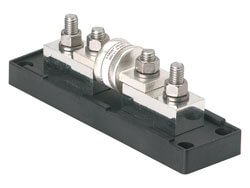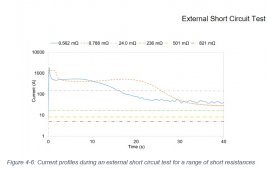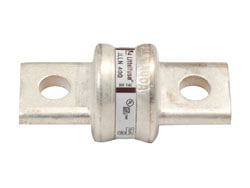Just re-read this topic from the top. I might be missing something obvious.
I've been looking at MRBF (10KA @ 14v) as the second best option to a Class T.
But looking at the figures posted by
@mikefitz, ANL is 6KA at
32v (and 80v for some). Which should mean 16KA (or even up to 40KA) at 12v. Way higher than MRBF.
Is it that simple?
Obviously Class T is the gold standard. I'm not totally against the idea of spending the money for a class T. In fact I already have one on order, but with long lead times here in the UK I've got another week or so to reconsider.
A different, related question- fuse sizing. My biggest load is an EPever 3000w inverter. The manual says to use a fuse rated for twice the max current (=500A) but they don't specify what type of fuse. If I use a 500A class T, looking at the delay curve, it's never going to blow in anything other than a dead short. I'm not sure that's a great idea? The retailer said to use a 400A Mega Fuse. I have ordered a 400A Class T thinking I was erring a little on the safe side, but maybe I should swap that for a smaller one. 250A? That lets me use normal size bus bars etc.
And then there's inrush currents... I don't fully understand what that's about, but I've read enough to know that they happen regardless of whether a load is connected, and that they vary from one inverter to another. And I worry that a 250A class T could be blown despite no actual fault, which could get a bit spendy.
I feel like I'm over thinking all this. But going back to my original question, I could have a massive class T followed immediately by a smaller ANL. That gives me a weak link that won't break the bank if it blows, as well as solid protection against dead shorts. Seems overly complex, but at UK prices I can buy ten ANL fuses and a holder for the price of a single spare Class T.
Obviously I don't want to go bigger than necessary as that forces me to upgrade everything else. I'm using a Blue Sea HD isolator (600A) so that's not going to be a problem. I guess everything is driver by the biggest load, which is the 3000w inverter. It's an EPever, and the manual says to use a fuse rated at double the max draw, so that would be 500A. I've been going round in circles looking at delay curves- they don't specify what type of fuse to use, which makes a big difference. A class T can run at 200% for about a minute, whereas the inverter should only draw 500A for up to 10s during surges.
I've already ordered a 400A class T, it's not shipped yet and I'm thinking of dropping that down to 250A. That makes it a lot easier to find bus bars etc which






